Interaction with biodiversity
Avoiding and minimising our impact on natural capital
Climate action Nature Biodiversity
Iberdrola actively seeks to identify the impact and dependency we have on biodiversity and natural capital so as to avoid, minimise, remedy and offset it where necessary.
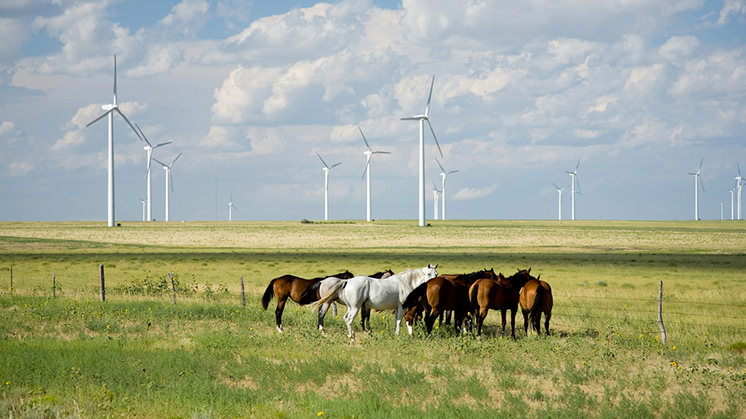
Iberdrola's business of generating, moving, distributing and supplying energy involves interacting with a variety of ecosystems, landscapes and species across a very broad geographical area. This means we need the appropriate infrastructure to be built, operated, maintained and eventually dismantled.
This infrastructure includes thermal power stations, reservoirs, hydrodroelectric plants, wind farms, substations and underground and overhead power lines. These facilities and structures are located in places ranging from remote hills, forests and coasts to the very heart of cities.
The Iberdrola Group works to avoid, minimise, restore and offset the impact that these essential elements of our infrastructure can have on natural capital and biodiversity.
Iberdrola applies the mitigation hierarchy approach (avoid, minimise, remedy and, as a last resort, compensate) in processes of environmental impact assessment (EIA) that it undertakes for new projects. These analyse alternatives, prioritising avoidance of placing new infrastructure in protected areas or areas with a high biodiversity value although not protected, and, moreover, introduces good environmental practices using a systematic approach and methodology:
- Prior to initiating the administrative process, Iberdrola consults the various Stakeholders about new projects.
- It incorporates good building practices that go beyond the applicable legal requirements in each case during the planning and the execution of works.
- After the administrative process and during construction Iberdrola continues to work in conjunction with Stakeholders so that environmental effects can be as small as possible, as well as in restoring affected areas.
Through the EIA procedures, Iberdrola identifies and assesses the potential impact of new projects. If the initial analysis reveals significant repercussions, the project will be altered to the extent possible, applying the finest techniques available and taking the measures deemed necessary to correct and minimise them. Where full mitigation is not feasible, compensatory action will be taken.
Our task of keeping environmental impact in check does not end once the facility has been built — it continues whilst in operation and until the facility is dismantled. Throughout that time, plans are defined and implemented to monitor and control environmental aspects and management systems are applied, most of which are compliant with standards ISO 14001 or EMAS, to prevent and control environmental risks.
In the sections below are some examples of the good practices and the approach taken in the regions where Iberdrola operates.
How we manage biodiversity in different regions
-
"Our goal of preserving biodiversity is embedded in the company's management activities."
Protecting and conserving biodiversity is a priority in Iberdrola's management activities in Spain. The company has spent years working on integrating the action principles defined in Biodiversity Policies and environmental guidelines into its own management systems, action procedures, programmes and plans. Now, Iberdrola's environmental management system in Spain provides a framework for the business units to apply their certified environmental management systems (ISO 14001:2015 and EMAS). These systems allow us to materialise and ensure compliance with our commitments and lines of action through specific programmes and measures.
As a company, we apply cutting-edge biodiversity preservation criteria in our infrastructure projects. This involves conducting environmental studies prior to building them, which we were doing even before the Environmental Impact Assessment regulation was passed. Installing new projects outside protected areas has become a priority criterion when selecting new sites, according to the first of the mitigation hierarchy principles, which are included in all environmental impact studies. During the process, we work with stakeholders to find sound solutions that will keep our environmental impact to a minimum.
Acting on the commitments undertaken in the Biodiversity Covenant, the company is keen to promote biodiversity management strategies and take part in initiatives to develop natural capital appraisal methodologies, streamline the restoration of ecosystems and measure impact from a life cycle perspective.
-
Collaborating with stakeholders is a crucial part of our biodiversity procedures.
ScottishPower is helping to protect the environment through a framework of complementary environmental management systems (certified under international standard 14001:2015). Our environmental management systems are aligned with the United Nations Sustainable Development Goals, especially linked to preventing contamination and fostering ongoing environmental improvements. The will to protect natural habitats and restore biodiversity stands at the base of ScottishPower's on-site operations managed by our Energy Networks and Renewables business units.
Site selection and land management for new projects is also a critical stage. ScottishPower interacts and collaborates with local communities, official environmental authorities, government advisors and other stakeholders right from the design phase, all through the construction process and until project completion. We make sure projects are planned down to the finest detail to avoid causing any potential damage to environmentally sensitive areas and rare species by adhering to the principles of the mitigation hierarchy. This means that when it comes to developing measures to address potential repercussions on biodiversity receptors, we apply the following principles in this order: prevention, mitigation and compensation.
ScottishPower also continues to work with stakeholders during on-site operations, which includes modifying environmental conditions, potential environmental repercussions and, where applicable, mitigation measures. We follow the guidelines and advice provided by the Government, regulators and industry specialists so as to minimise and mitigate the impact that operating our infrastructure could have on environmentally sensitive areas and other receptors. Working in collaboration with stakeholders, we also leverage any opportunities that may arise to conduct revolutionary research and apply ground-breaking techniques with which to gain greater scientific knowledge of the species and therefore better protect and support natural capital wherever possible.
-
Avangrid is firmly committed to sustainable development and caring for the environment. These key values are what guides our strategies and actions. Without preserving ecosystems and biological diversity, there is no way to achieve sustainable development and a long-lasting energy model. Biodiversity and ecosystems deteriorate rapidly, bringing about major environmental, economic and social risks. Avangrid understands the huge threat that those risks entail and acknowledges its responsibility as a leading energy company to take measures to preserve biodiversity that go beyond damage mitigation strategies. It is with this responsibility in mind that we have defined the following actions:
- To integrate biodiversity preservation into our group strategy;
- To implement a preventive approach to lessen the impact of new infrastructure on biodiversity;
- To foster compensation of biodiversity and restoration of natural capital wherever we make an impact;
- To protect species and habitats through positive conservation management;
- To raise awareness to the loss and preservation of biodiversity among Avangrid's employees and contractors; and
- To take part in research, preservation and awareness raising programmes and to collaborate with government agencies, NGOs, local communities and other stakeholders.
-
In Brazil, the power plants that are in the process of being commissioned and those already up and running have been subjected to systematic assessments to measure the impact of our activity on biodiversity. The methodology used varies according to the potential impact each one may have and the requirements of the environmental authorities in each area.
This commitment to preserve the environment and reduce the impact we have on biodiversity is crucial since Brazil is home to much of the planet's biodiversity. Therefore, our work to protect it includes:
- Projects to set up distribution and transmission lines and substations that are designed to minimise interferences with fauna and flora wherever possible;
- Projects to generate energy that are guided in every stage of development by environmental programmes, the aim being to implement the mitigation hierarchy, which involves avoiding, minimising and restoring the impact caused and, where necessary, compensating it with reforestation work and conservation of habitats and species.
- Compliance by the company with all legal obligations and requirements for environmental permits, as well as refraining from undertaking any action unless the necessary environmental authorisations are granted.
- Most of the companies in the Neoenergia Group have been certified by the Environmental Management System in accordance with definitions set out in ISO 14.001:2015. The aim is for all of the companies in the Neoenergia Group to obtain this certification.
The Neoenergia Group works in close collaboration with its stakeholders with a view to defining reliable parameters to measure the impact our business activity has on biodiversity, joining forces to help address the global challenge of measuring the Impact and Dependency Relationship of Biodiversity and Ecosystem Services.
-
"Supporting, improving and caring for biodiversity throughout the facilities' lifecycle."
In line with the Group's policies, we are promoting support projects in Mexico to preserve biodiversity. This means taking measures before the facilities are built and all the way through to full operation.
In the stages prior to construction, the following work is carried out in strict alignment with the conditions set by the Mexican environmental authorities:
- Conducting biodiversity studies in the areas where future facilities will be built so as to gain a thorough understanding of the species surrounding the site and their level of conservation;
- Carrying out wildlife rescue programmes and relocating species of particular significance in terms of biodiversity.
Later, at the operating stage, specific projects are deployed to protect species, especially in the Altamira region. Reforestation plans have also been made to mitigate environmental impact.
Identifying the most significant impacts on biodiversity
-
In order to suitably prevent, minimise and correct any possible impacts that may be caused by the Group's activities, products and services at the various stages of a facility's life cycle, it is important to identify the most significant general effects they have on biodiversity. These effects derive from the work carried out during the different stages of a facility's life cycle.
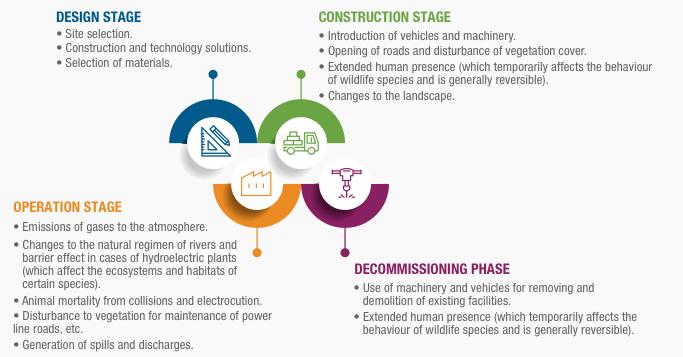
-
Tools to assess the impact of the activities performed at each different stage
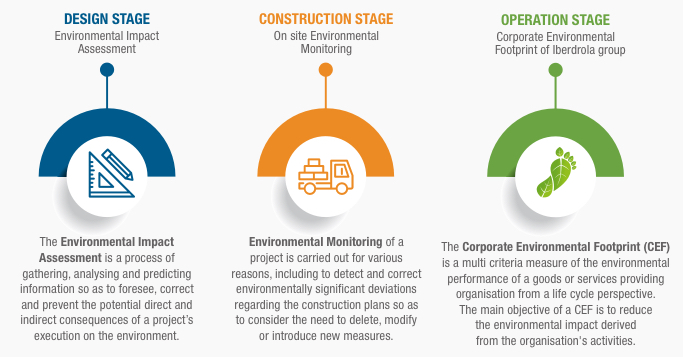
-
With regard to these actions, we can list a number of significant potential effects on biodiversity arising from the activities, products and services of the group. Their relevance depends on the technology involved and the stage of the project.
POTENTIAL IMPACTS Construction stage Changes in the use of soil Alteration of the landscape Fracturing of ecosystems Alteration of habitats Displacement of species Operation and maintenance stage General impacts Loss of habitat and species Increase in greenhouse gas emissions and climate change Pollution of air, ground and/or aquatic environment Impact on avifauna Electrocutions Collisions Impact on terrestrial fauna Electrocution, trapping, etc. Impact on ichthyofauna Changes in water quality Discharges/spills into hydrological environment Impact on flora Production and spreading of fires Deterioration in the edaphic environment
Identifying dependencies
In order to operate and maintain a facility, as well as raw materials, we need a series of services which are provided by nature. The identification of these dependencies helps us to appreciate those services and plan actions to prevent their modification, protect them and preserve them. Having analysed the Group's activities, we found that we depend on the following natural services:
- Maintaining watercourses using the water cycle. This cycle keeps up the level of water in rivers which we need to produce energy at hydropower plants and to perform cooling functions at our thermal power plants.
- Regulating the climate, which nature does through the carbon dioxide stored in the ground, vegetable biomass and oceans. This service is important at all generation facilities.
- Stabilising the land and controlling erosion. Vegetation on slopes prevents avalanches and landslides. This service is important at hydropower plants and all along transport and distribution networks.
- Protecting us from floods and storms through the role that vegetation plays in mitigating these weather events. This service is important at hydropower plants and all along transport and distribution networks.
We have also identified a dependency on abiotic provisioning resources, the main ones being:
- Water. This resource is the source of production at hydropower plants and is needed to perform cooling functions at thermal power plants.
- Mineral and non-mineral resources (gas and uranium) as fuel to generate electricity at thermal power plants.
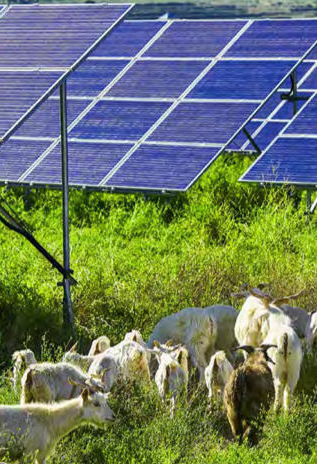
Biodiversity protection
How do we protect and preserve biodiversity on some of our more flagship projects?
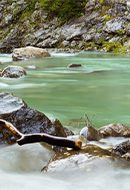
Water usage
Respect for this resource also implies the preservation of biodiversity.
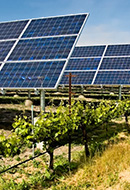
Agrovoltaics
Dual land use for agriculture and energy relieves pressure on ecosystems.

Certifications and verifications
Environmental certifications classified by facility and by certification standard.




